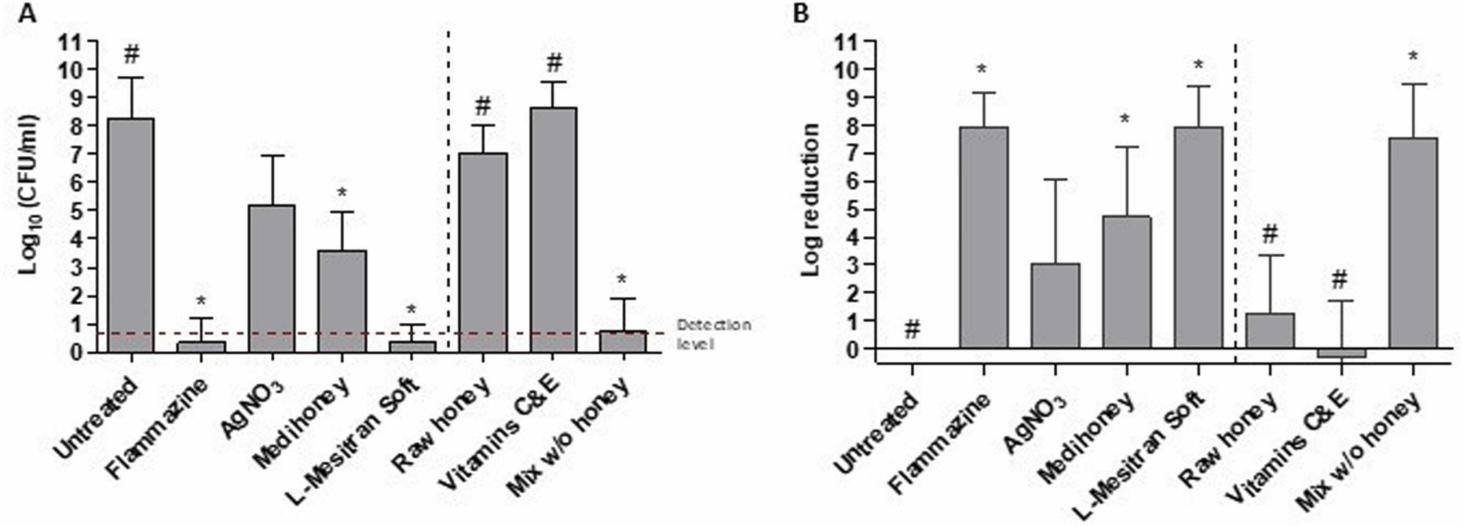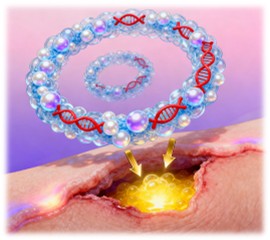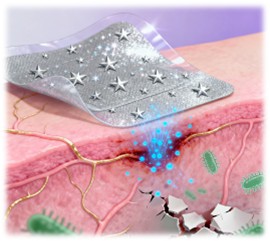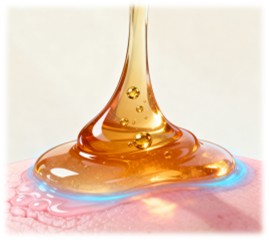Burn wounds pose a significant challenge in modern medicine, with complications often arising from bacterial infections and prolonged healing times. Traditional treatments, such as silver-based dressings, have long been the standard of care. However, recent advancements in wound care have highlighted the potential of medical-grade honey (MGH) as a superior alternative. This article delves into the scientific basis of MGH's efficacy, its mechanisms of action, clinical evidence supporting its use, and the practical implications for burn wound management.
 Fig.1 Antibacterial effects in the infected burn wound model. (Boekema B. K., et al., 2024)
Fig.1 Antibacterial effects in the infected burn wound model. (Boekema B. K., et al., 2024)
The Global Impact of Burn Injuries

Burn injuries are a leading cause of morbidity and mortality worldwide, with an estimated 180,000 deaths attributed to burns annually. The economic burden is substantial, with countries like South Africa spending millions on burn care each year. The psychological and physical impact on patients is profound, often leading to long-term complications and reduced quality of life. The primary challenges in burn wound management include infection control, particularly from bacteria like Pseudomonas aeruginosa, and promoting efficient wound healing.
The Threat of Pseudomonas aeruginosa

Pseudomonas aeruginosa is a notorious pathogen in burn wound infections, known for its ability to form biofilms and resist traditional antibiotics. This bacterium exploits the compromised immune system of burn patients, leading to severe complications and increased mortality rates. The increasing prevalence of antibiotic-resistant strains further complicates treatment strategies, necessitating the exploration of alternative therapies.
Traditional Treatments and Their Limitations

Silver-based dressings have been a mainstay in burn wound treatment due to their antimicrobial properties. However, these dressings are not without drawbacks. Silver can cause skin irritation and delay the healing process, particularly when used for extended periods. Additionally, the increasing prevalence of antibiotic-resistant strains of P. aeruginosa limits the effectiveness of silver-based treatments. The need for a safer and more effective alternative has led researchers to explore the potential of medical-grade honey.
The Science Behind Medical-Grade Honey

Medical-grade honey (MGH) is a sterilized and standardized form of honey, free from pathogens and optimized for medical use. MGH has demonstrated potent antimicrobial activity against a broad spectrum of pathogens, including P. aeruginosa. The mechanisms underlying its effectiveness include its acidic pH, high sugar content, hydrogen peroxide generation, and the presence of bioactive compounds. Unlike silver-based treatments, MGH does not pose a risk of resistance and promotes natural wound healing.
Mechanisms of Antimicrobial Activity
MGH's antimicrobial properties stem from several key factors:
- Acidic pH: The low pH of honey creates an environment inhospitable to bacteria.
- High Sugar Content: The osmotic effect of honey's high sugar concentration draws water from bacterial cells, inhibiting their growth.
- Hydrogen Peroxide: MGH generates hydrogen peroxide, which has antibacterial properties.
- Bioactive Compounds: MGH contains various bioactive compounds that contribute to its antimicrobial effects.
Promoting Wound Healing
In addition to its antimicrobial properties, MGH promotes wound healing in several ways:
- Moist Environment: MGH maintains a moist wound environment, which is conducive to healing.
- Autolytic Debridement: It stimulates the body's natural process of breaking down dead tissue.
- Nutrient Provision: MGH provides essential nutrients to the wound bed.
- Antioxidant and Anti-inflammatory Effects: These properties help reduce inflammation and promote healing.
Clinical Evidence and Case Studies
Recent studies have demonstrated the efficacy of MGH in treating burn wounds. A study comparing L-Mesitran Soft, a MGH-based gel, to silver-based treatments showed that L-Mesitran Soft exhibited similar antimicrobial effects while promoting better wound healing. Clinical cases further illustrate the effectiveness of MGH in treating infected burn wounds.
Case Study 1: Pseudomonas-Infected Burn Injuries
A 71-year-old female patient presented with full-thickness burns and skin graft wounds. Initial treatments with povidone-iodine and sterile gauze failed to heal the wounds. After starting treatment with L-Mesitran products, the wounds showed significant improvement, with reduced signs of infection and increased granulation tissue. The patient experienced less pain, and the wounds fully healed after 3 months.
Case Study 2: Pseudomonas-Infected Burn Wounds
A 57-year-old male patient with full-thickness burn wounds on his head showed no improvement with initial treatments. After starting MGH treatment, the wounds improved significantly, with reduced signs of infection and increased granulation and re-epithelialization. The wounds fully healed after 56 days.
Practical Implications for Burn Wound Management
The use of MGH in burn wound management offers several practical advantages. Its broad-spectrum antimicrobial activity and pro-healing properties make it a versatile and effective treatment option. MGH can be used for extended periods without posing a risk to healthy tissue, unlike silver-based treatments. Additionally, MGH lacks the cytotoxic effects associated with silver, making it safer for long-term use.
Advantages of MGH
- Broad-Spectrum Antimicrobial Activity: Effective against a wide range of pathogens, including antibiotic-resistant strains.
- Promotes Wound Healing: Enhances re-epithelialization and keratinocyte proliferation.
- Safe for Long-Term Use: Lacks cytotoxic effects and does not delay the healing process.
- Cost-Effective: Provides a cost-effective alternative to traditional treatments.
Future Directions and Research
As the field of wound care continues to evolve, further research is needed to fully explore the potential of MGH. Studies should focus on the long-term effects of MGH on wound healing, its efficacy against various pathogens, and the development of standardized protocols for its use. Additionally, comparative studies with other advanced wound care products can provide valuable insights into the optimal treatment strategies for burn wounds.
Conclusion
Medical-grade honey represents a promising alternative to traditional burn wound treatments. Its potent antimicrobial properties, combined with its pro-healing effects, make it a valuable addition to the arsenal of burn wound care. As antibiotic resistance continues to rise, MGH offers a natural and effective solution for managing burn wounds, improving patient outcomes, and reducing the economic burden of burn care.
If you have related needs, please feel free to contact us for more information or product support.
Reference
- Boekema, Bouke KHL, et al. "Comparing the antibacterial and healing properties of medical-grade honey and silver-based wound care products in burns." Burns 50.3 (2024): 597-610.
These products and services are for research use only and cannot be used for any clinical purposes!



 Fig.1 Antibacterial effects in the infected burn wound model. (Boekema B. K., et al., 2024)
Fig.1 Antibacterial effects in the infected burn wound model. (Boekema B. K., et al., 2024) 


